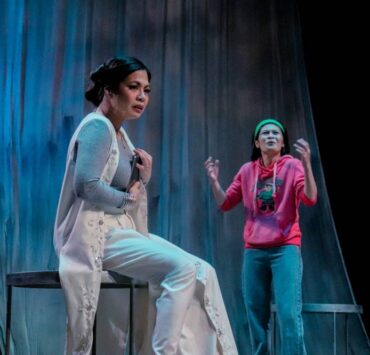Peta’s ‘Kumprontasyon’: Public forum disguised as theater
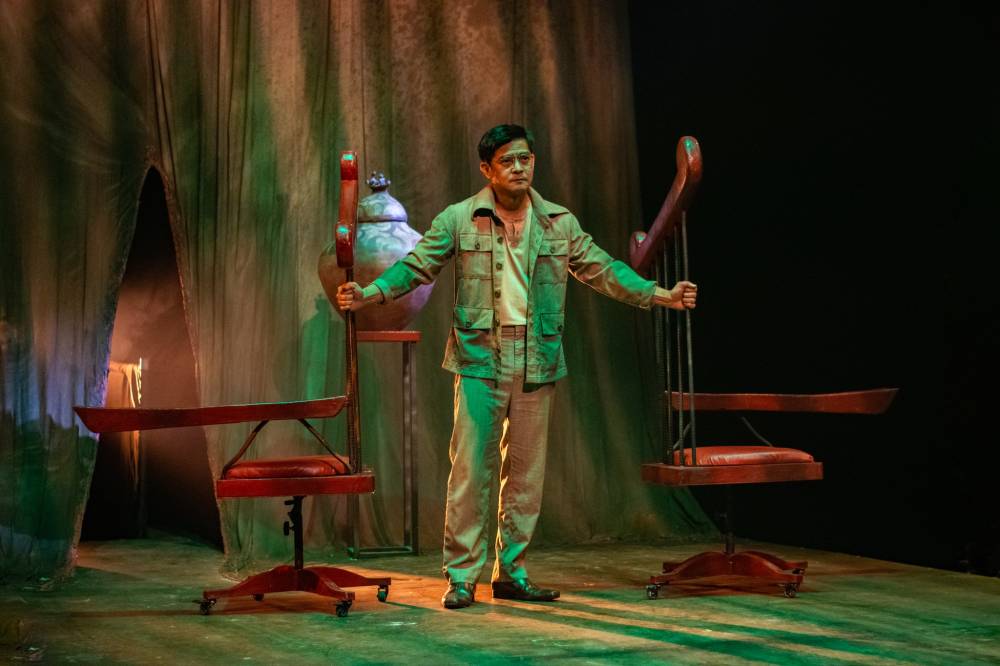
Imagine standing face-to-face with the man who murdered your spouse. Or confronting the very political force that imprisoned you, now asking for your confession. Or watching a younger version of yourself—burning with idealism—against the backdrop of a future where disillusionment reigns.
These are the offerings of “Kumprontasyon,” the main production in the Philippine Educational Theater Association’s (Peta) Control + Shift: Changing Narratives Festival, which sets the stage for an already formidable 2025 in Philippine theater. More importantly, it reminds us of what theater should do: Disturb the undisturbed, and make the comfortable squirm.
A culminating work for director Melvin Lee’s Master’s in Theater Practice at the University of the Philippines, “Kumprontasyon” intertwines the visions of three of this generation’s most compelling playwrights—Allan Palileo, Guelan Luarca, and Joshua Lim So. Though conceived in different contexts, Lee stitches them into a fever dream of what-could-have-beens, a triptych that reimagines history, politics, and self-reflection with relentless urgency.
He describes the trilogy as kathang-isip, mere fiction. And yet, “Kumprontasyon” invites us to wonder—what if these imagined moments were true? The near-impossible nature of these confrontations is precisely the point, making this a chilling exercise in both speculation and truth-seeking.
Like a tennis match at Peta Theater Center, the audience’s gaze shifts left and right as three confrontations unfold.
‘Lakambini’
Palileo’s “Lakambini” resurrects Gregoria de Jesús (“Oriang”) decades after the Philippine Revolution to face the man responsible for her husband Andres Bonifacio’s execution—Emilio Aguinaldo. For history books, Aguinaldo is a hero. Here, he is a traitor, seen through the eyes of a widow whose grief never found closure.
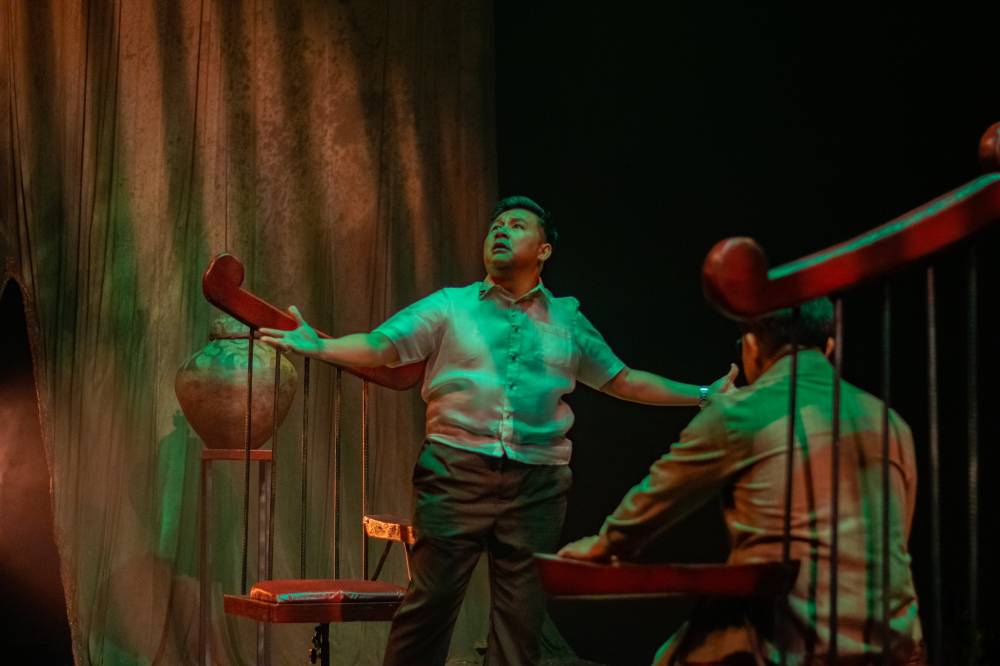
Historians have long debated the injustice of the Bonifacio brothers’ trial, but “Lakambini” is not just about history—it is about pain demanding its due. Teroy Guzman’s Aguinaldo is measured and dignified, yet guilt lingers in his every breath. But this is Sherry Lara’s show. Her Oriang is scathing yet restrained, her grief simmering beneath every word.
It’s impossible to watch “Lakambini” without recalling Lin-Manuel Miranda’s “Hamilton,” where the question is posed: Who lives, who dies, who tells your story? The answer here is clear: It is the widow, and she speaks. The climactic moment—Oriang demanding Aguinaldo kneel before her—feels less like a plea for forgiveness and more like justice long denied.
What “Lakambini” achieves is extraordinary: It transforms figures from mere portraits on coins into flesh-and-blood beings, pulsating with unresolved history.
‘An Impossible Dream’
Arguably the most riveting act, “An Impossible Dream” stages an imagined (and impossible) conversation between an unnamed President and a Jailed Senator—a thinly veiled face-off between Ferdinand Marcos Sr. and Ninoy Aquino.
The President dangles amnesty before his imprisoned opponent, asking for a confession. What unfolds is not a simple exchange—it is a dissection of power, legacy, and the political mythologies that take root in the minds of an “idiotic” electorate.
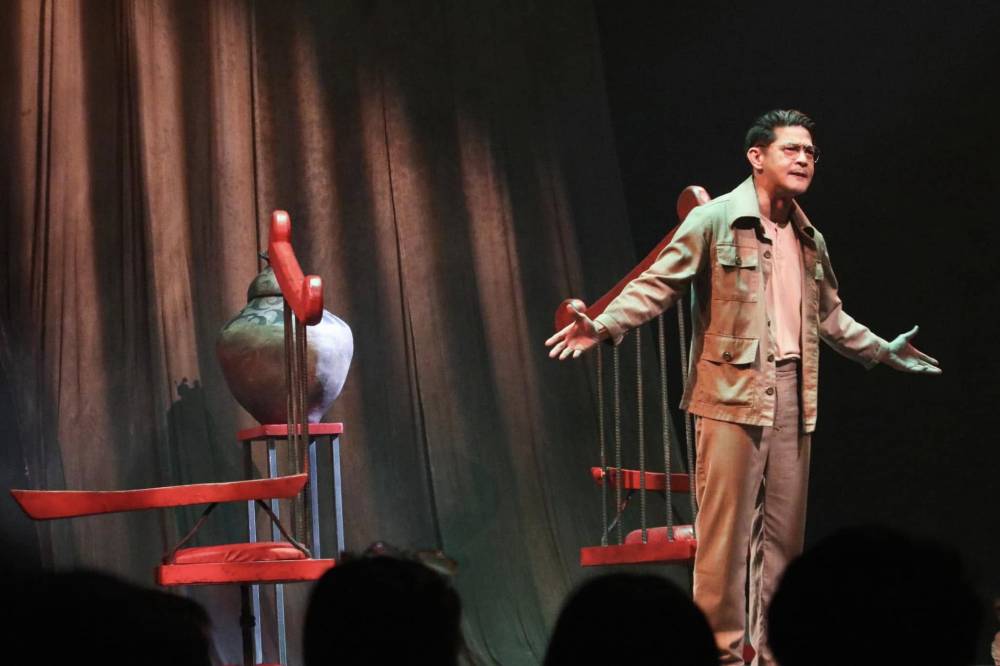
Luarca’s writing is razor-sharp, surgical in wit, yet never self-indulgent. His brilliance is no surprise, given his recent success with “3 Upuan,” now back on stage for its well-deserved rerun. He masterfully interrogates how dictators justify themselves, how rivalries define legacies, and, most crucially, how people—then and now—blindly choose sides.
Rendered with thrilling complexity, the exchange between the President (Ron Capinding, who bears an uncanny resemblance to Marcos Sr. at times and delivers a performance for the ages) and the Senator (Romnick Sarmenta) never simplifies itself into a mere hero-versus-villain dynamic. Instead, it compels us to confront an unsettling reality: These two political giants—rivals in public, yet “brods” in private—once stood on common ground.
‘A Color for Tomorrow’
The odd one out in the trilogy, but not without weight, Palanca Hall of Famer So’s “A Color for Tomorrow” is an exploration of time, memory, and the shifting nature of political conviction.
Set in 2058, it follows a woman (Missy Maramara, compelling as ever) who has developed an augmented reality technology allowing her to conjure her past selves. She confronts her 22-year-old self—fiery and unwavering in her belief in the Pink campaign of 2022—and her 35-year-old self, now a successful advertiser who has flipped her political allegiance. The result is a fascinating, if sometimes chaotic, confrontation forcing the audience to ask: What happens when hope curdles into cynicism?
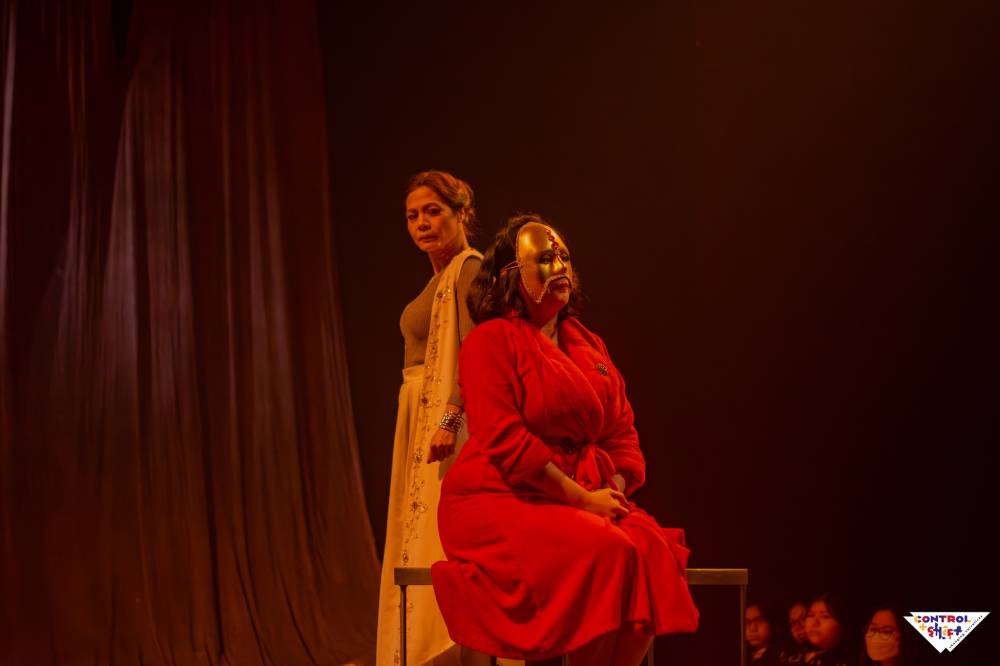
The play resonates deeply, particularly with those still processing the last elections. At the talk-back, audience members reflected on where they saw themselves: in the idealism of the 22-year-old, the pragmatism of the 35-year-old, or the reckoning of the 60-year-old.
Yet, for all its resonance, “A Color for Tomorrow” stumbles under the weight of its ambition. Some sequences feel convoluted, its messaging a little too on-the-nose. Unlike Floy Quintos’ masterfully restrained “Reconciliation Dinner”—which is also a reaction to the 2022 elections—this play tries to say too much, leaving moments of brilliance scattered rather than cohesive.
Exercises in memory
The magic of “Kumprontasyon” is not just in its individual parts, but in Melvin Lee’s curation of the whole. It is, at its core, a public forum disguised as theater—a place where we are asked to remember, reimagine, and reckon.
The play opens with an audiovisual montage, rewinding through triumphs and tragedies of Philippine history, reminding us that these stories—whether historical what-ifs or deeply personal reckonings—are exercises in memory.
The ticket description notes that “Kumprontasyon” is “best for high school and college audiences.” And yes, more students should have their imaginations stirred by narratives that go beyond textbooks. But this is not just for students. It is for anyone willing to engage with history, confront uncomfortable truths, and wrestle with the ghosts of our past.
For in remembering, we do not merely honor those who came before us—we remind ourselves of the choices we must still make. And that, ultimately, is what makes “Kumprontasyon” essential theater.
Peta’s Control + Shift: Changing Narratives Festival runs till Feb. 23. Visit @petatheater. Tickets available at TicketWorld or bit.ly/PETACS2025Tickets.















